Ellie Ivanova Ponti
Molas, a traditional female shirt of the Kuna people of coastal Panama, are an interesting case of a traditional art with a special role in today’s globalized culture. Kuna people have an unique culture that has survived centuries and although their lands are a popular tourist destination now, they have kept their traditions and customs, as well as their group identity and unity.
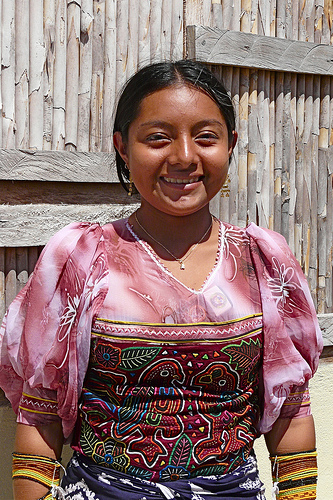 Photo: Rita Willaert
Photo: Rita Willaert
Molas are made of a back and a front textile panel stitched together, each of them made of small pieces of colorful strips of fabric, forming an intricate pattern. The designs range from simple to very elaborate and the themes can be abstract, flowers and animals, mythological and political. Actually, even though now they are a from of art identified with Kuna culture, molas’ origin came with colonization and they are in fact a colonial tradition.
They came into existence to replace the designs Kuna women used to paint on their own bodies. When Spanish missionaries came to the islands of today’s Panama some 150 years ago and introduced an European type of clothing, those designs were transferred to the shirts Kuna started wearing. Here are some examples of molas with abstract geometric, flower and animal and mythological patterns.
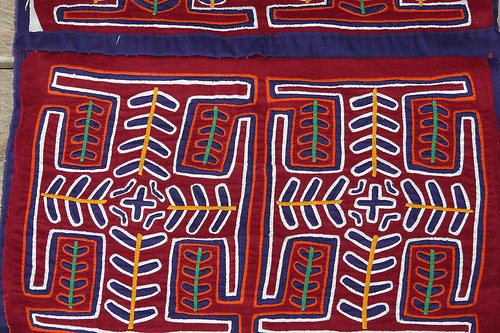 Photo: Rita Willaert
Photo: Rita Willaert
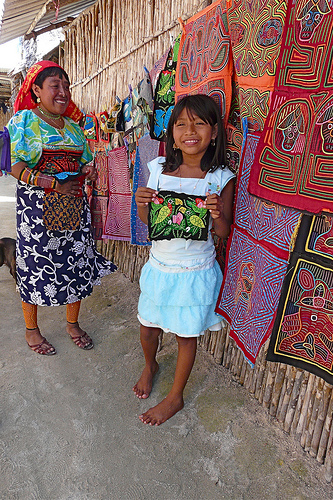 Photo: Rita Willaert
Photo: Rita Willaert
 Photo: Rita Willaert
Photo: Rita Willaert
Molas are available at local markets in Panama, especially on the San Blas Island. They are the most important source of income for the Kuna, as they are produced to meet tourists’ demand as much as for personal use.
Of course, just as has happened with other traditional crafts, there are a few traders who buy molas at very low prices locally and then import them in wealthy countries, especially the US, for a huge profit. There is a debate if this practice is ethical. On one hand, this is a way for molas to reach a larger market and wider appreciation and interest in the culture that has produced them. On the other hand, though, even if Kuna craftswomen were paid the same prevailing local price for their molas, the result is that middlemen get the lion’s share of the final cost.
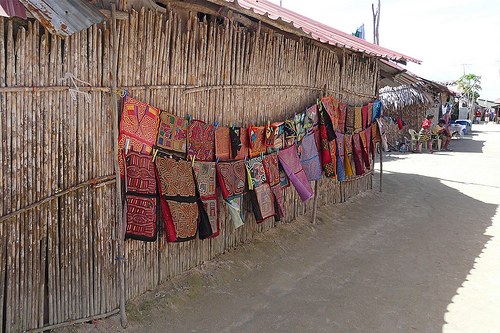 Photo: Rita Willaert
Photo: Rita Willaert
Molas are similar to American quilts because they are:
*made by women, who present through them their worldview and values artistically;
*function as practical personal everyday objects, yet with infinite decorative possibilities;
*a traditional art, acquired within the community from other women;
*can range from simple to very elaborate;
*a mixture of colors and patterns;
*the technique used is applique, reverse applique and embroidery;
*a craft that bridges the community with the outside world, as they are popular as souvenirs for tourists.
However, the most important difference between quilts and molas is that they are produced by a matrilineal society, in which men play a secondary role as hunter-gatherers, while women are the main vigilant guardians of their cultural integrity and sovereignty. In this way, molas turn out to be one of the principal visual expressions of the community beliefs, produced specifically by those who control community power.
At the same time, this very tool for asserting cultural independence, molas, is also the main connection between Kuna and the outside world. The mola production and commerce is in its turn the main reason Kuna have stayed a rather closed culture, not dependent on jobs created through economic development coming from the outside. Molas are the reason and the means, as well as the emblem, for Kuna identity.
But the mola story has one more twist. Consider, for example, this mola, reproducing an image of something well too known from contemporary mass culture, the Pokémon. Molas with images of Disney and other characters from the international entertainment industry also exist. How do we reconcile these examples of external visual influence with the fierce cultural independence of Kuna? Should we be scandalized?
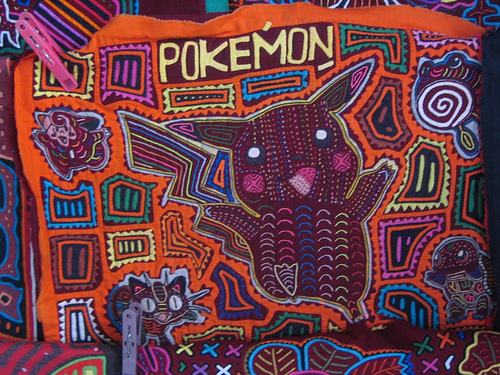 Photo: Klara Kim
Photo: Klara Kim
Personally, I believe that these motif borrowings are just one of the many cultural mixes we already know. Molas themselves are a product of such a mixture: the indigenous designs with colonial clothing requirements. For me, incorporating this extraneous image into the traditional Kuna culture is only a sign of the vitality of an art that develops, changes and includes new phenomena observed around it.
You can read other articles by Ellie Ponti on her blog.











1 comment so far ↓
Nobody has commented yet. Be the first!
Comment